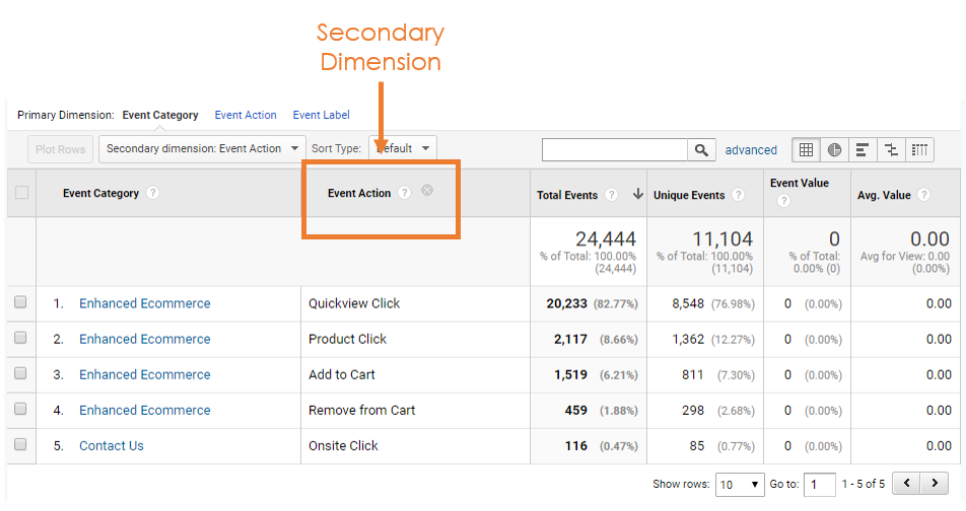Opening the Power of Second Dimension Analytics for Boosted Data Insights and Decision-Making
In the world of information analytics, main dimensions typically take the spotlight, but the true deepness of understandings exists within the realm of secondary dimensions. By using the power of second measurement analytics, organizations can unveil hidden fads, discover connections, and extract more purposeful final thoughts from their data.
Importance of Second Measurements
Checking out the significance of second measurements in analytics unveils the hidden layers of information insights crucial for educated decision-making in different domains. Second dimensions provide a much deeper understanding of primary information by providing additional context and viewpoints. By integrating second dimensions into analytics, companies can extract a lot more comprehensive and nuanced understandings from their datasets.
One key relevance of secondary measurements is their ability to sector and categorize primary information, enabling an extra comprehensive evaluation of specific parts within a dataset. This segmentation allows businesses to recognize patterns, trends, and outliers that could not be apparent when considering the data all at once. Moreover, additional measurements help in uncovering connections and dependences between different variables, leading to even more accurate forecasting and anticipating modeling.
Additionally, second dimensions play a vital duty in enhancing data visualization and reporting. By adding additional measurements to visualizations, such as graphs or charts, experts can produce extra useful and insightful depictions of information, promoting far better interaction of searchings for to stakeholders. On the whole, the assimilation of second measurements in analytics contributes in opening the complete possibility of information and driving evidence-based decision-making.
Trick Advantages of Using Additional Dimensions
Making use of additional dimensions in analytics supplies organizations a strategic benefit by enhancing the deepness and granularity of data understandings. By exploring information utilizing second dimensions such as time, area, gadget kind, or individual demographics, companies can discover patterns, fads, and connections that might otherwise continue to be hidden.
Moreover, the usage of additional measurements improves the context in which main information is translated. By leveraging second measurements in analytics, companies can harness the full potential of their data to drive much better decision-making and accomplish their service goals.
Advanced Information Evaluation Strategies
A deep dive right into innovative information evaluation strategies discloses innovative approaches for removing valuable understandings from intricate datasets. One such strategy is machine learning, where algorithms are employed to identify patterns within information, predict end results, and make data-driven choices. This technique enables for the automation of analytical model building, enabling the handling of huge quantities of data at a faster pace than traditional approaches.
An additional sophisticated method is predictive analytics, which uses analytical formulas and device knowing techniques to anticipate future results based on historical information. By examining trends and patterns, organizations can expect client behavior, market fads, and prospective risks, encouraging them to make positive decisions.
Furthermore, message mining and belief evaluation are useful methods for removing understandings from unstructured information sources such as social media remarks, customer testimonials, and survey responses. By examining text information, organizations can recognize customer point of views, determine arising patterns, and boost their services or items based on comments.
Enhancing Decision-Making Through Additional Dimensions

Enhancing decision-making through additional measurements enables companies to make even more informed and targeted tactical options. For instance, by segmenting customer data based on additional measurements like purchasing history or interaction degrees, firms can customize their marketing techniques to certain target market sectors, leading to improved conversion rates and client contentment. Secondary measurements can aid recognize connections and connections between different variables, enabling companies to make data-driven choices that drive growth and success.
Implementing Secondary Measurement Analytics
When integrating secondary measurements in analytics, organizations important source can open deeper insights that drive strategic decision-making and improve overall efficiency. This requires comprehending the specific concerns the company seeks to address and the data factors required to address them.

Additionally, companies should take advantage of progressed analytics tools and innovations to enhance the process of incorporating additional measurements. These tools can automate data processing, evaluation, and visualization, permitting organizations to concentrate on translating understandings instead of manual data adjustment.
Verdict
In verdict, second measurement analytics play a critical duty in boosting information insights and decision-making processes. By utilizing advanced information evaluation methods and carrying out additional dimensions effectively, companies can open the power of their information to drive tactical business choices.
In the world of information analytics, primary measurements usually take the limelight, however the true deepness of understandings lies within the world of second dimensions.Utilizing second dimensions in analytics provides companies a calculated advantage by augmenting the deepness and granularity of data insights. By leveraging second measurements in analytics, organizations can harness the complete capacity of their data to drive much better decision-making and achieve their organization goals.
Executing information validation procedures and routine audits can help preserve data top quality and reliability.
By making use of sophisticated information analysis strategies and carrying out secondary dimensions effectively, companies can open the power of their data to drive critical company choices.